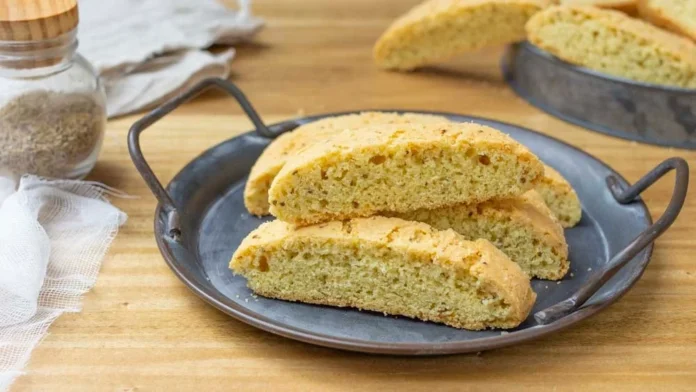Bишкоти ди Прато: A Journey Into Tuscany’s Timeless Biscotti Tradition
When you picture a sun-kissed Tuscan afternoon, you might imagine rolling vineyards, terracotta rooftops, and the golden warmth of the Italian countryside. But for those who know the region’s culinary heritage, another image comes to mind: a slender, crunchy, almond-studded treat known as бишкоти ди прато. While many outside Italy recognize them simply as biscotti, their original name tells a deeper story — one steeped in history, craftsmanship, and tradition.
The Origins: From Prato to the World
The name бишкоти ди прато literally translates to “biscuits of Prato,” a nod to the Tuscan city where they were first crafted centuries ago. Historians trace their creation back to the Renaissance period, when local bakers experimented with recipes that could withstand long journeys without spoiling. The result was a hard, twice-baked biscuit that travelers, soldiers, and sailors could carry for weeks — a practical necessity in a time before refrigeration.
Prato, known for its rich textile industry and vibrant trade, became a hub for this almond-laden delicacy. By the 18th and 19th centuries, бишкоти ди прато had become a staple not only in Tuscan homes but also in aristocratic gatherings, often served alongside sweet dessert wines.
What Makes Them Unique
At first glance, бишкоти ди прато may seem like any other biscotti, but there are distinct characteristics that set them apart:
- The Almond Factor – Authentic recipes call for whole, unblanched almonds. Their skins contribute both flavor and texture, as well as a rustic appearance.
- Twice-Baked Perfection – The term biscotti itself comes from the Latin bis coctus, meaning “twice cooked.” The dough is first baked in a loaf form, then sliced and baked again to achieve the signature crispness.
- No Added Fats – Traditionally, no butter or oil is used. This not only extends shelf life but also keeps the texture light and brittle.
- A Subtle Sweetness – Unlike modern cookies, these are not overly sugary, making them perfect for pairing with beverages rather than eating alone.
How бишкоти ди прато is Traditionally Enjoyed
In Italy, especially in Tuscany, these biscuits are rarely eaten dry. Instead, they are paired with a glass of Vin Santo, a sweet dessert wine made from dried grapes. The crisp texture of the biscotti softens as it soaks up the golden liquid, releasing the nutty aroma of the almonds.
For coffee lovers, dipping them in an espresso or cappuccino is a popular alternative. In the colder months, some enjoy them with hot chocolate, letting the biscuit soak just enough before taking a bite.
Ingredients: Simplicity at Its Finest
Authentic бишкоти ди прато recipes have changed little over the centuries. The core ingredients include:
- Flour (typically all-purpose or “00” Italian flour)
- Sugar
- Eggs
- Whole almonds (often toasted before baking)
- A pinch of baking powder
- Optional flavorings like vanilla, anise seeds, or lemon zest
This simplicity is deceptive; the magic lies in the technique.
The Traditional Baking Process
- Mixing the Dough – The eggs and sugar are beaten until pale and airy, then combined with flour and flavorings to form a sticky, pliable dough.
- Shaping the Logs – The dough is shaped into long, flat logs, spaced apart on a baking sheet.
- First Bake – These logs are baked until just firm, still pale in color.
- Slicing – After cooling slightly, the logs are cut diagonally into slices about 1–2 cm thick.
- Second Bake – The slices are returned to the oven and baked until golden and crisp.
The second bake is where the transformation happens — from soft and slightly chewy to brittle, fragrant, and irresistibly crunchy.
Modern Variations
While purists insist on sticking to the almond-only tradition, contemporary bakers have embraced creativity:
- Chocolate-Dipped – Half of the biscuit is coated in dark or white chocolate for extra indulgence.
- Nut Blends – Variations use hazelnuts, pistachios, or macadamias.
- Fruit Infusions – Dried cranberries, apricots, or cherries add bursts of sweetness.
- Spice Twists – Cinnamon, cardamom, or ginger bring warmth and depth.
These modern takes often cater to international palates, but the essence of бишкоти ди прато remains.
Cultural Significance in Tuscany
To the people of Prato, these biscuits are more than just a dessert — they are a symbol of local pride. Festivals, culinary competitions, and even museum exhibits have celebrated their heritage. Local bakeries often guard their recipes closely, passing them down through generations.
The biscuits are also a common gift during holidays and special occasions. Wrapped in clear cellophane with a ribbon, they convey warmth, tradition, and a touch of Tuscan hospitality.
Pairing and Serving Tips
If you want to enjoy бишкоти ди прато like a true Tuscan, here are some tips:
- With Vin Santo – Serve in small glasses and dip the biscuit right before eating.
- With Coffee – Use a short, strong espresso for a bold flavor contrast.
- With Cheese – Try pairing with mild, creamy cheeses for a sweet-savory experience.
- As a Gift – Present them in a decorative tin or jar for freshness.
Bишкоти ди Прато vs. Generic Biscotti
Not all biscotti are created equal. While many countries have adopted the concept of twice-baked cookies, бишкоти ди прато has a stricter tradition:
| Feature | Бишкоти ди Прато | Generic Biscotti |
|---|---|---|
| Origin | Prato, Tuscany | Various regions |
| Nuts | Whole almonds | Any nut or none |
| Fat content | No butter/oil | Often includes butter |
| Pairing | Vin Santo | Coffee or tea |
| Sweetness | Mild | Often sweeter |
Making Them at Home
For those inspired to bring a taste of Tuscany into their kitchens, homemade бишкоти ди прато is surprisingly achievable. The key is patience — particularly during the second bake. Store them in an airtight container, and they will keep for weeks, making them an ideal make-ahead treat for guests or gifts.
A Taste That Transcends Time
From Renaissance trade routes to modern coffee shops, бишкоти ди прато has traveled far while retaining its original charm. Its crisp snap, aromatic almonds, and versatile pairings make it a treat that connects the past to the present. Whether you enjoy it with wine in Tuscany or coffee in your own kitchen, you’re partaking in a centuries-old tradition.






